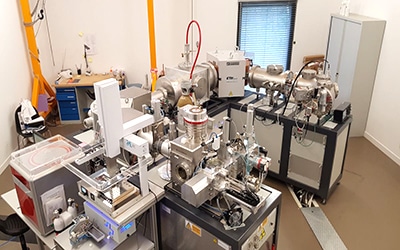Radiocarbon unit
Contacts
Edouard BardScientific Officer
Thibaut TunaTechnical manager of the AixMICADAS spectrometer
Yoann FagaultTechnical Manager for Chemical Preparation of Carbon Sources
Frauke Rostek
In charge of sample pre-treatment
Radiocarbon dating is the most widely used geochronological method for the last 50,000 years. It is based on the radioactive decay of 14C originally produced in the upper atmosphere by interaction with cosmic ray particles. The content of 14C content of a fossil sample is compared to the atmospheric 14C, which constitutes the starting reference, before its regular disappearance by radioactive decay with a period of 5700 years.
In addition, the 14C is not homogeneously mixed in the different reservoirs of the biogeochemical carbon cycle. The measurement of 14C of representative samples of these reservoirs can therefore be used to quantify the speed and intensity of exchanges, as well as their natural and anthropogenic disturbances, as the carbon in fossil fuels does not contain radiocarbons.
The radiocarbon unit is dedicated to the measurement of 14C to date paleoclimatic, paleoceanographic and archaeological records, as well as to study the carbon cycle, including natural and anthropogenic exchanges between the atmosphere, ocean, vegetation and soils through 14C.
The radiocarbon unit was founded in 2011 within the framework of the EQUIPEX ASTER-CEREGE co-financed by the Chair of Climate and Ocean Evolution of the Collège de France. The Trocadero de l'Arbois building, which houses the LGO2i, has undergone laboratory refurbishment and the construction of an extension to accommodate the AixMICADAS accelerator mass spectrometer, installed in 2014 and inaugurated in 2016. The unit has additional equipment for carbon purification and CO2 or graphite analysed directly with AixMICADAS.


